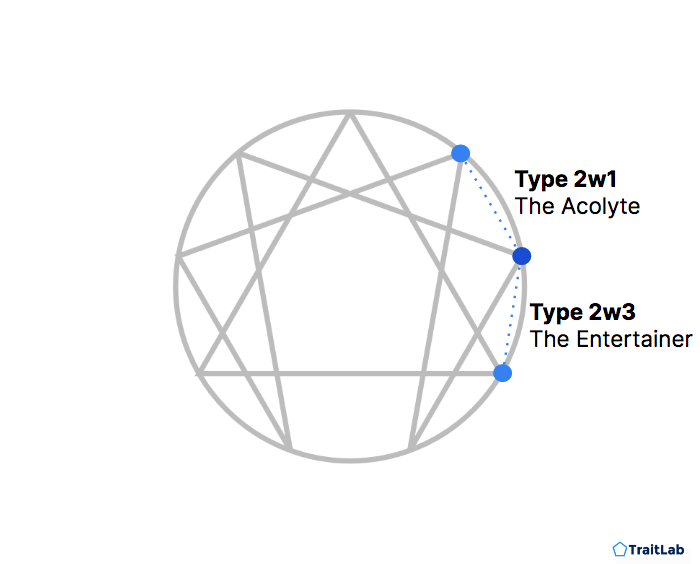The Enneagram is a model of personality centered on nine distinct personality types.
Reading time: 5 minutes

Gregory Park, Ph.D.
Author
The Enneagram is a model of personality centered on nine types.
According to most Enneagram theories, each of the nine types has characteristic thinking, feeling, and behavior patterns. However, various authors use different terminology for these patterns, including passions, fears, fixations, traps, and ideas.
Each type has a shared set of beliefs about its survival needs and how to fulfill them. Unfortunately, these beliefs are often false and can mislead each type, creating a cycle of unproductive behaviors and reactions.
For example, people classified as a Type 1 – or simply, Ones – have a false belief that they must be perfect and cannot make mistakes. This false belief can make Ones perfectionistic, judgmental, and critical of themselves and others. In the best case, they can be highly conscientious, moral, and deliberate. But at their worst, they can be demanding, impatient, and angry.
Enneagram proponents argue that knowledge of one’s type allows one to notice these characteristic patterns. Only by seeing these patterns clearly can one finally interrupt them and overcome them.
The nine Enneagram types are:

Do you know your closest Enneagram type?
See how your personality compares to all nine types with TraitLab's comprehensive assessment.
The type labels above are from a systematic literature review by Hook and colleagues (2020), but other authors may use different labels.
Common ways to find your Enneagram type are self-report measures, typing interviews, or self-typing.
Self-report measures determine your type based on your answer to dozens or hundreds of shorter questions. Popular self-report measures include:
The Enneagram test at TraitLab assesses your similarity to all nine Enneagram types and identifies which type is most similar to you.
In a typing interview, an experienced interviewer determines your Enneagram type by leading you through a structured set of questions.
However, a study of typing interviewers by Gamard (1986) suggests that the typing interview may not be a reliable technique. Gamard found little agreement between experienced interviewers when they interviewed the same person.
Another common typing technique is to classify your own type based on intuition and knowledge of the type descriptions. Many individuals feel they can confidently classify themselves based on their reading, workshops, or other materials.
Because there is no objective method for determining a person’s Enneagram type, it is impossible to know the accuracy of any self-report measure.
Furthermore, different tests (i.e., self-report measures) may disagree on a person’s Enneagram type. For example, a study by Dameyer (2001) found that 58% of participants received different types when they completed two different but popular measures (the Riso-Hudson Enneagram Type Indicator and the Wagner Enneagram Personality Style Scales).
Despite the weaknesses of most self-report Enneagram tests, typing interviews are not much better. A study by Gamard (1986) found that experienced interviewers often classified the same person differently. Moreover, experienced interviewers only agreed with each other slightly more than less experienced interviewers, too.

The typical Enneagram figure displays nine points around a circle. Each point represents an Enneagram type.
The relative positions of the types show each type’s wings and the lines within the circle show potential paths for intertype movement.
Every Enneagram type has two adjacent types, known as wings. For example, Type 2’s wings are Type 1 and Type 3, because Type 2 sits between them.

Some Enneagram authors claim that, in addition to their primary Enneagram type, a person may take on characteristics of one of the wings.
A Type 2 who occasionally exhibits the patterns of Type 1 might describe themselves as a “Type 2 with a Type 1 wing”, often written as “2w1”.
To find your Enneagram wing, consult the Enneagram figure above and find the two types surrounding your type.
You may self-type your wing after reading descriptions of each potential wing type. Alternatively, some self-report measures include a wing as part of the results.
Some Enneagram proponents (e.g., Chestnut, 2013; Matise, 2018) posit that types take on characteristics of other types in times of security (i.e. integration) or stress (disintegration), a process called intertype movement.

The lines on the Enneagram figure describe the path of intertype movement. In stressful times, types disintegrate along the path of 1-4-2-8-5-7-1 or 3-9-6-3.
For example, a Type 4 takes on characteristics of Type 2, and a Type 3 takes on characteristics of Type 9.
In times of security, types integrate along the reverse paths: 1-7-5-8-2-4-1 or 3-6-9-3. In this situation, a Type 4 takes on characteristics of a Type 1, and a Type 3 takes on characteristics of a Type 6.
Early forms of Enneagram theory trace back to Russian philosopher George Gurdjieff in the early 1900s. While some authors have claimed that Enneagram connects to earlier sources, no conclusive historical trail is known.
The work of Gurdjieff strongly influenced Oscar Ichazo, who incorporated aspects of his Enneagram theory as part of his teachings in the mid-1950s.
Variations of Ichazo’s teachings began spreading in the late 1960s by former students and others. Ichazo and colleagues attempted to stop this spread through copyright infringement lawsuits but lost (Effross, 2003).
Today, with the Enneagram effectively in the public domain, there are no legal restrictions on who may use the Enneagram in their teaching, coaching, or practice.
There is no central authority on the Enneagram, and there is no universally accepted, gold standard measure for assessing types, wings, or other features of the Enneagram model.
Despite wide popularity, neither the Enneagram model nor Enneagram assessments are used in modern, peer-reviewed research on personality.
TraitLab estimates that the most common Enneagram type is Type 9: The Peacemaker. Roughly 25% of people would most likely be classified as Type 9.
This is only an estimate. Because there are many different Enneagram type assessments and none of the authors have reported their results from a representative sample, it is impossible to know the rarity or commonality of any single Enneagram type.
However, because Enneagram types have consistent relationships with other personality traits, TraitLab can estimate the relative commonality of each type based on the observed patterns of those same personality traits in a broader sample of people.
Using the same methodology described above, TraitLab estimates that the rarest Enneagram type is Type 6: The Loyalist. Only about 3% of people would most likely be classified as a Type 6.
On average, each Enneagram type has a distinct pattern of the Big Five personality traits. Learn more in the article on Enneagram and the Big Five Personality Traits.
Watch the TraitLab blog for more articles about individual Enneagram types and research on how the Enneagram framework connects to other major personality systems.
For a recent view of Enneagram-related research, see the systematic review by Hook et al. (2021).